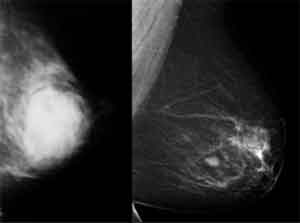- Home
- Editorial
- News
- Practice Guidelines
- Anesthesiology Guidelines
- Cancer Guidelines
- Cardiac Sciences Guidelines
- Critical Care Guidelines
- Dentistry Guidelines
- Dermatology Guidelines
- Diabetes and Endo Guidelines
- Diagnostics Guidelines
- ENT Guidelines
- Featured Practice Guidelines
- Gastroenterology Guidelines
- Geriatrics Guidelines
- Medicine Guidelines
- Nephrology Guidelines
- Neurosciences Guidelines
- Obs and Gynae Guidelines
- Ophthalmology Guidelines
- Orthopaedics Guidelines
- Paediatrics Guidelines
- Psychiatry Guidelines
- Pulmonology Guidelines
- Radiology Guidelines
- Surgery Guidelines
- Urology Guidelines
Mammography beneficial even beyond age 75,claims study

A new study reports that elderly women aged 75 years and above should continue to get screening mammograms due to a high incidence of breast cancer found in this age group.
The findings of the study will be presented at the annual meeting of the Radiological Society of North America (RSNA).
The United States Preventive Services Task Force (USPSTF) in the year 2009 released guidelines stating there was not enough evidence to assess benefits and harms of screening mammography in women age 75 and older which raised controversies. However, other professional groups advise that women may continue to undergo mammography screening as long as they are in good health.
Speciality Medical dialogues has earlier reported that 3D mammography or breast tomosynthesis can detect over 30% more breast cancer as compared to traditional mammography — with a majority of detected tumors being invasive cancers.
Read Also: 3D mammography more effective for breast cancer screening
According to the authors, the findings provide important data demonstrating that there is value in screening women over 75 because there is a considerable incidence of breast cancer.
Dr. Destounis and associates analyzed data from 763,256 screening mammography exams at Elizabeth Wende Breast Care between 2007 and 2017. 3,944 patients were diagnosed with screening-detected cancer.
The investigators further did the analysis to identify the number and type of cancers diagnosed among women 75 years of age and older.
Read Also: Bi-annual MRI better than annual mammography in high risk women
The study included 76,885 patients (10 percent) age 75 and older with an average age of 80.4. The authors diagnosed a total of 645 malignancies in 616 patients, for a cancer rate of 8.4 detections per 1,000 exams in this age group.
The study found 82 percent of the malignancies diagnosed were invasive cancers, of which 63 percent were grade 2 or 3, which grow and spread more quickly. The cancers that were treated surgically were 98%. In 7 percent of the patients, positive lymph nodes were reported at surgical excision. Due to advanced patient age or overall degraded patient health, 17 cancers were not surgically treated.
For earlier detection of breast cancer, mammography plays a significant role because it can show changes in the breast up to two years before a woman or her physician can feel them so that better treatment can be provided on time which would increase the chances of survival.

Disclaimer: This site is primarily intended for healthcare professionals. Any content/information on this website does not replace the advice of medical and/or health professionals and should not be construed as medical/diagnostic advice/endorsement or prescription. Use of this site is subject to our terms of use, privacy policy, advertisement policy. © 2020 Minerva Medical Treatment Pvt Ltd